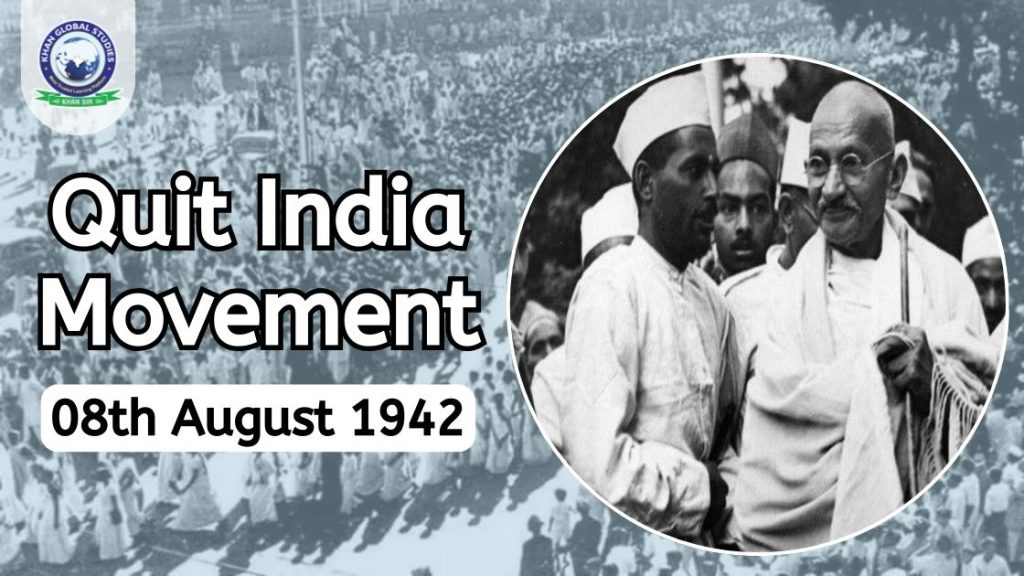The Quit India Movement, also known as the August Movement, was a key moment in India’s struggle for independence from British colonial rule. This article provides a comprehensive overview of the movement, highlighting its importance in India’s fight for independence.
Overview of the Quit India Movement
The Quit India Movement was a mass civil disobedience movement launched by Mahatma Gandhi on 8 August 1942, demanding the end of British rule in India. Its objective was to unite Indians across the country in a unified effort to achieve independence.
Facts
- The Quit India Movement emerged in the backdrop of the Second World War, in which the Indian National Congress demanded immediate independence in return for Britain’s support in the war effort.
- Mahatma Gandhi delivered the iconic “Do or Die” speech, urging Indians to non-violently resist British rule and be prepared to face the consequences.
- The movement saw widespread participation of people from all walks of life, including students, farmers, workers and women, making it one of the largest mass movements in the history of India.
Reason
- Decades of British colonial exploitation, economic policies favouring British interests, and political repression led to growing discontent among Indians.
- Nationalist sentiment was further intensified by the British government’s failure to address Indian demands for greater self-rule and its rejection of the Cripps Mission proposal.
Feedback
- The British responded to the Quit India Movement with brutal force and arrested thousands of leaders and activists, including Mahatma Gandhi, Jawaharlal Nehru and other prominent leaders.
- Mass protests, strikes and acts of civil disobedience paralyzed the administrative machinery across the country, challenging British authority and highlighting the strength of Indian unity.
Importance of Movement
- The Quit India Movement marked a turning point in India’s freedom struggle, with the demand for immediate independence becoming the central rallying cry.
- It demonstrated the power of nonviolent resistance and civil disobedience as powerful weapons against colonial oppression, inspiring similar movements around the world.
- The movement laid the foundation for India’s eventual Independence in 1947, cemented Mahatma Gandhi’s legacy as the Father of the Nation, and inspired a sense of Indian nationalism.
Conclusion
The Quit India Movement may not have achieved immediate success, but its impact was undeniable. It intensified the freedom struggle, solidified India’s demand for complete independence, and served as a stepping stone towards achieving that goal in 1947. The movement remains a powerful symbol of India’s unwavering spirit and its fight for self-determination.








